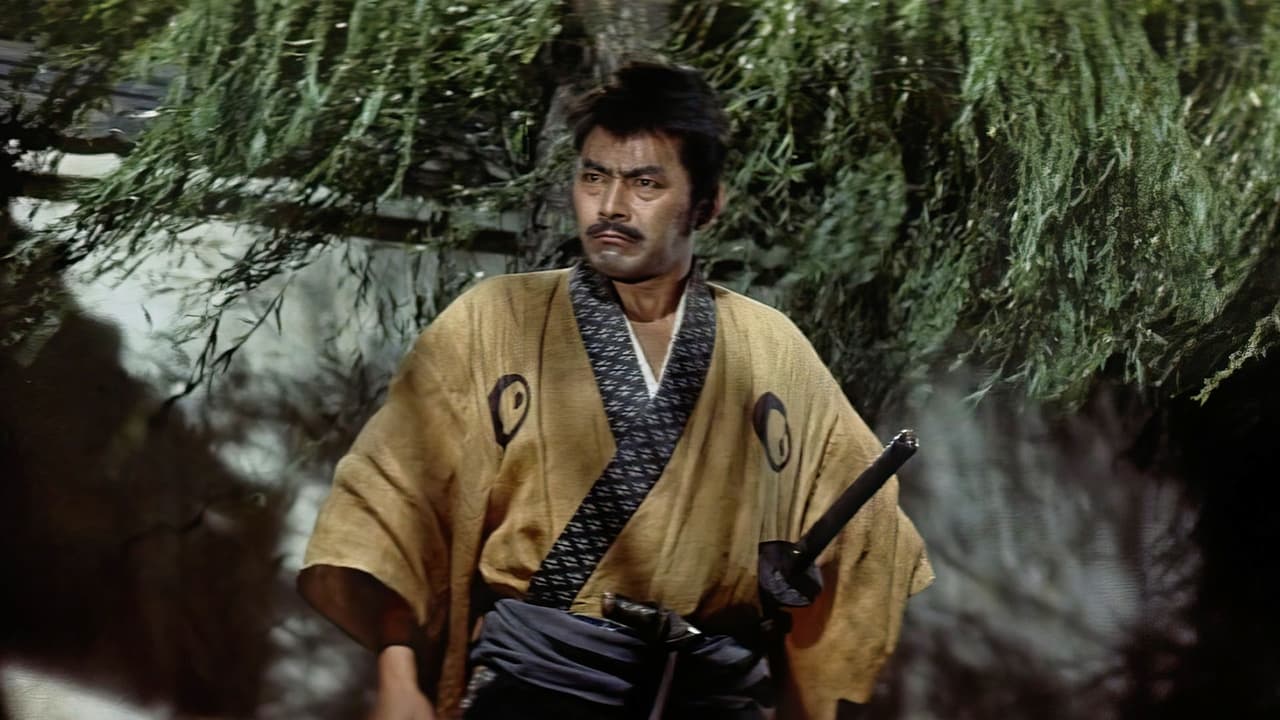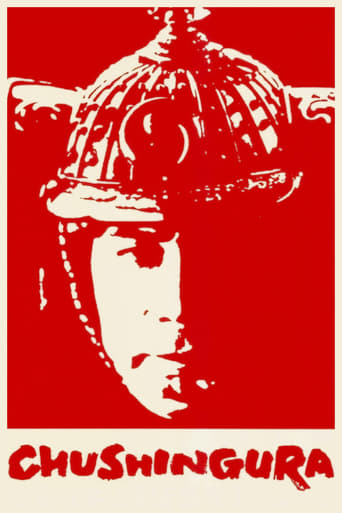CrawlerChunky
In truth, there is barely enough story here to make a film.
ChicDragon
It's a mild crowd pleaser for people who are exhausted by blockbusters.
filippaberry84
I think this is a new genre that they're all sort of working their way through it and haven't got all the kinks worked out yet but it's a genre that works for me.
Kien Navarro
Exactly the movie you think it is, but not the movie you want it to be.
David Conrad
For centuries, the story upon which this film is based has been extremely popular in Japan but little-known in the wider world. The 1962 movie "Chushingura" is the most famous of literally dozens of cinematographic retellings. It focuses on some of the individual samurai who set out to avenge their dead lord. The character work is quite good, especially for some of the younger samurai whose romantic entanglements make them question their commitment to their suicidal pact. The film takes a long time to build to its climax, and a full appreciation of its nuances may require some preexisting knowledge of Japanese history and culture. Despite being the only actor depicted on the usual poster, Toshiro Mifune has a very minor role, though it is an intriguing one.
MartinHafer
This story of the 47 loyal ronin (ronin is a Japanese word for a master-less samurai) is based on actual events that took place in 1701 and 1702--although some of the exact details are uncertain (including the actual number) . What is certain is that a feudal lord attempted to murder on of the Shogun's trusted men in one of the royal castles. As a result, the attempted murderer was ordered to commit ritual suicide and his retainers (now ronin) vowed revenge on the man almost killed. What the exact insult was is lost to history, but the tale is considered a classic and most Japanese people are very familiar with it.It would have a very hard time giving any version of this story a 10 because there are so very many that you can't give them anything for originality. According to IMDb, on Japanese TV alone, something like a dozen different versions were made just during one decade! And, as far as movies go, there are also quite a few. I've seen the classic 1941 version and found it to be very, very different from CHUSHINGURA because it was much more nationalistic and seemed, at times, like wartime propaganda (albeit, very good propaganda) AND because the film was much more fast-moving--skipping much of the setup that you find in this remake. In other words, in 1941, the insult and the attempted murder take place very early into the film and here in 1962, it doesn't occur until about an hour into the film. In fact, while an amazingly well made film, CHUSHINGURA is perhaps too deliberately paced and could have used an edit. While I like very long films, this one just wasn't paced well enough to merit its 3-1/2 hour running time. At 2-1/2 or 3 hours, it would have played better.As for the acting, sets and everything else about the film, it was all first-rate. The film was obviously a prestige film and as a consequence was filmed in lovely full-color. In fact, other than the pacing and ubiquity of the plot, it's a very well made and interesting film--probably even more so in Japan, where it's a beloved tale illustrating loyalty and honor.Finally, it should be noted that although Toshirô Mifune is shown on the DVD art and all the pictures here on IMDb, his role is very small and this is definitely a film with a large ensemble cast--not a Mifune film per se. His fans might be disappointed by this and you might want to consider this before you watch.
iamskabanis
I just finished seeing this movie for the second time last night. Running time 3+ hours. I am one for Japanise history and love Samurai movies. This movie tells the true story of the 47 Ronni who took revenge for their Lord (Asano) being shamed and dishonored subjected to Harakiri. Many side plots which actually make the film go on for maybe 30-40 minutes too long. From what i read in histories and legends of Samurai, the revenge factor and also the fact that it takes place a year later actually cause more dishonor. That the Lord Kiri might of died from old age of even sickness would of made their revenge a moot point. That these Ronni didn't really understand what it meant to be a true Samurai. I loved the movie, but what moves me is all the angles which honor dishonor is displayed. A big downer was Toshiro Mifune had such a small roll. I actually bought the movie cause he was on the front cover. This is one of the best movies to discuss about Samurai honor and dishonor, as from what i read after the act happened these 47 Ronin were considered heroes by many.
LucyCannon
I read the old play in an Asian History class in college some quarter-century ago, so I don't remember a lot of the "classic" plot. So I came to this movie almost cold, only knowing that there were 47 masterless samurai bound to avenge their master. This no doubt colored my view of the pacing, which to my mind took a very long time to get to the point where the young Daimyo Asano was provoked into his fatal breach of protocol.I thought that the villain, Lord Kino, was painted awfully black, a shameless greedhead and womanizer and a coward to boot, as well as playing petty personal politics. Since it had been so long since I read the play, I don't know whether the traditional portrayal of this character is quite as one-sided as here, or whether he is traditionally portrayed as believing himself to have been morally in the right, rather than merely self-serving. Portraying Kino as believing he was himself an honorable man would have made the young Daimyo's choice between defending his personal honor, and violating formal protocol, more poignant. Thus the ronin's own dilemma would have not only been between conflicting expectations of traditional duty, but a question of which course of action would be Doing the Right Thing in an abstract sense.I found the way the movie was edited made it difficult to distinguish one sequence from another -- I could not always tell whether a new sequence was begun, or the cut was a continuation of the current overall scene.Near the end, as the ronin are gathering for their final assault of Kino's palace, we cut to a brief scene, in which one woman, hidden in a hooded cloak, attacks another woman with a blade while she is sleeping. The sleeping woman awakes and subdues her attacker, pulling back her hood so we can see her face. My partner and I could not figure out which women in the story these were, nor how this fit into the larger plot. Could one of you who has seen this movie multiple times clue me in on what happened here?

